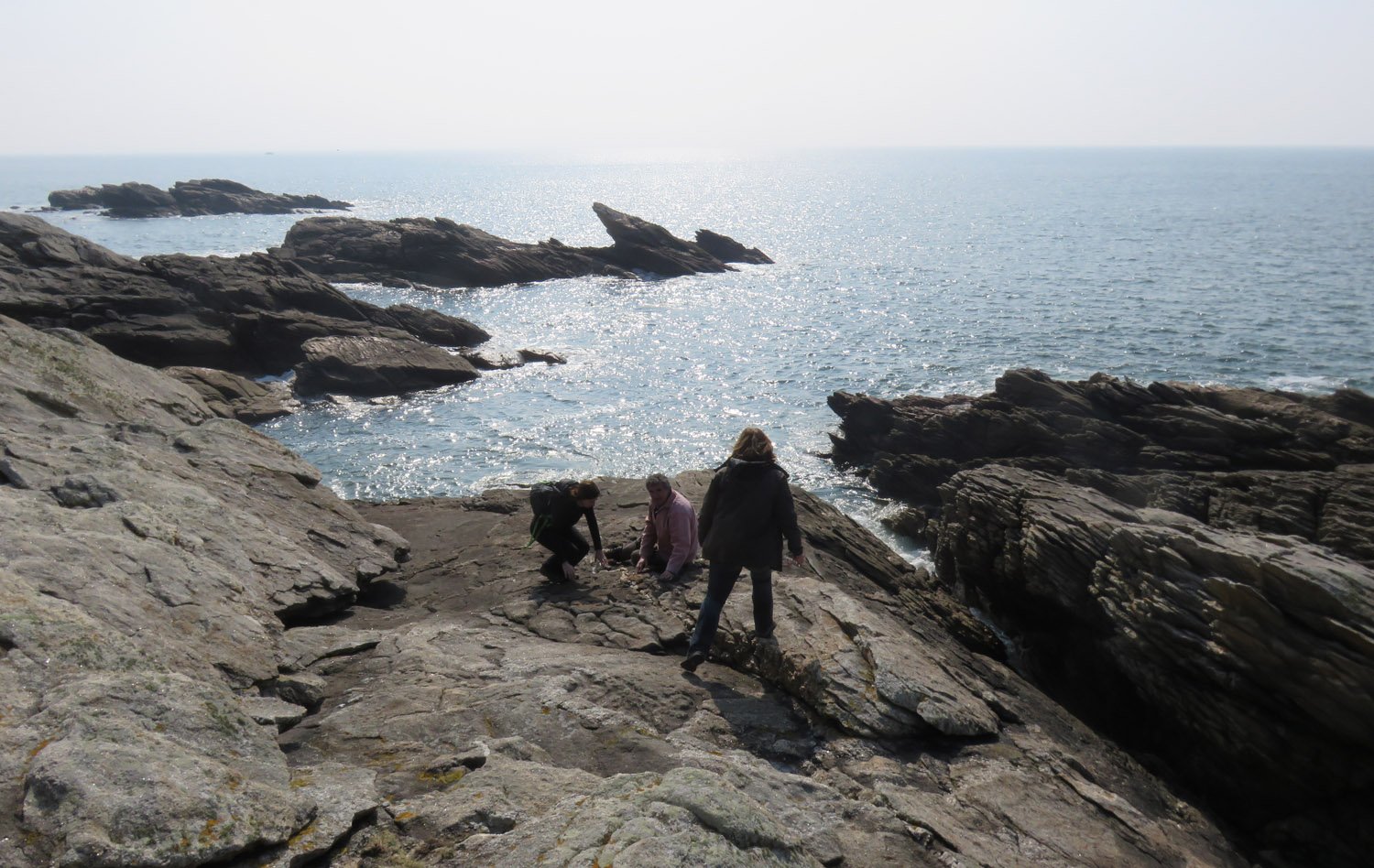For the first time scientists have been able to reconstruct the chemical composition of rainwater from 300 million year old minerals, allowing them to unpick some of the history of Brittany and Western France since the rain fell in the late Carboniferous period, just before the time of the dinosaurs. The results point to the area being mountainous and originally located close to the Equator. This work is presented at the Goldschmidt Geochemistry congress* in Barcelona.
The results come from isotopic analysis of rain which fell on the ancient Variscan belt mountain range. As lead researcher, Dr Camille Dusséaux (University of Plymouth, UK) said:
“Once we realised that the water in the sample was from rainfall, it meant that we could use standard geochemistry techniques to look back into history. This means that the rainfall can tell us about the altitude, the latitude of the mountains where it fell, and hints at why some radioactive minerals are found in the area”.

[ad_336]
The scientists analysed granite samples found today between Brest and Nantes. They also took samples from the Western part of the French Massif Central (Limousin). During the late Carboniferous period, these areas were located near the Equator, and were part of the Variscan Belt mountain chain that extended into Spain, Germany, and Southern England. Violent mountain building processes caused these areas to be deformed and cracked, forming major fault zones. This allowed rainwater to sink to ?15km below the surface.
Camille Dusséaux, commented: “We’ve managed to reconstruct the isotope composition of rainwater from minerals it interacted with while the continents were undergoing deformation. We’ve found that this interaction took place 15 km underground thanks to deep faults that dissected this mountainous area and played the role of conduits for rainfall to go down into the Earth.
“We used mass spectrometry to accurately identify the elements in the samples. We were able to measure the hydrogen isotope ratios in muscovite, which is a mineral found in granite that contains about 4% water in its structure. The amount of one type of hydrogen isotope was low enough to suggest a simple answer: rainwater had interacted with the mineral during its formation. This is not the oldest rainwater ever found, but the oldest where scientists have been able to isotopically reconstruct its composition and history”.
[rand_post]
They dated the samples by measuring the radioactive decay of Argon, and this confirmed they were around 300 million years old. Comparing the relative ratios of oxygen and hydrogen isotopes showed that the Variscan samples matched those which came from moderate to high altitude, indicating that the rain fell on a mountain range.
“This may help resolve a question which has been puzzling geologists for some time” said Dr Dusséaux. “The underlying geology has shown that it was likely that the Variscan Belt was a mountain range, but finding proof has been difficult”.
“This study suggests, in combination with earlier studies, that the circulation of rainwater in the Variscan mountain range had an impact on uranium mineralization. Between 320 and 300 million years ago, the oxidising rainwater leached the uranium ore out of the granites, and transported this uranium within the continents where it was precipitated in rocks called black schists. This created the uranium deposits which have been mined until recently in France and triggered the precipitation of uranium oxide that can have an impact on our health. This can break down to form radon gas, which has been causing problems for people living in granite houses built over the last centuries, not only in France but also in other granite-rich areas of the ancient Variscan belt, such as South-West England and elsewhere”.
[ad_336]
Commenting, Dr Catriona Menzies (University of Aberdeen) said:
“This study is a nice example highlighting how traditional isotope geochemistry and careful petrography of minerals formed deep in the Earth can shed light on surface conditions, even before dinosaurs roamed the Earth. The infiltration of rainwater deep into mountain belts is now being found in many ancient and modern regions, and suggests that rainwater may be responsible for controlling important processes, such as seismicity and the distribution of mineral resources, even deep within our Earth”.
Dr Menzies was not involved in this work, this is an independent comment.